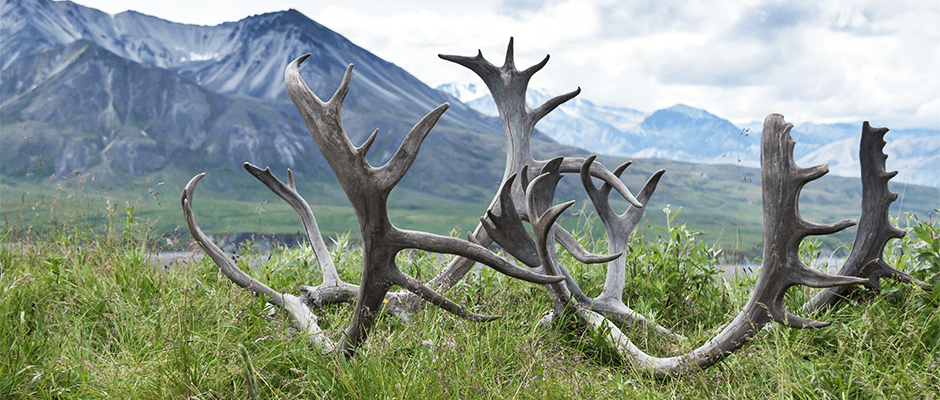Share this article
Can I keep this animal skull I found?
The following is an excerpt from the Alaska Chapter of The Wildlife Society’s February 2018 newsletter. You may read the full article, located on pages 10-13 of the newsletter, here.
A dead gray whale washed up on a beach near Juneau a few years ago. Over the course of several months, those willing to brave the stench salvaged the bones. When I checked it out, I asked one person who was taking some vertebrae if it was legal. He said he assumed it was okay, “because gray whales aren’t endangered.”
Alaskans are fond of animal parts. Hunters keep skulls, hikers find and keep shed antlers, beachcombers keep bones, and it seems like everyone keeps a few bird feathers. What is legal to keep, and what’s not? The path to the answer might be complicated, but generally the answer is simple: Yes, you can keep this or no, you can’t.
Animals in Alaska, and Alaska waters, are managed by different state and federal agencies, and each agency has rules about picking up and keeping parts of the animals they manage. In this context, the Alaska Department of Fish and Game (ADF&G) manages terrestrial wildlife, including upland game birds such as grouse and ptarmigan. The U.S. Fish and Wildlife Service (USFWS) manages, or co-manages with ADF&G, most other birds and three marine mammals: Pacific walrus, polar bear, and sea otter. The National Marine Fisheries Service (NMFS) manages other marine mammals, including seals, sea lions, porpoise, toothed whales and baleen whales. Land ownership, or status, is an issue as well, and there are places where animal parts must remain where they lie.
Antlers, skulls and bones
Brynn Parr is a permit biologist with the Division of Wildlife Conservation at ADF&G. She said if people are walking through the woods and finds a naturally shed antler, they can keep it. The same is true for skulls and bones. “As far as deer, elk, moose and caribou antlers go, you can pick them up and take them home,” she said. “It’s okay to take a deer skull. If someone found a Dall sheep skull, I’d recommend they bring it in and get a complementary seal, to document that it was found and it’s not a poaching situation. All sheep have to be sealed if they will be taken out of state. There is no sealing requirement in Alaska for deer, so no need to seal a deer skull.” The “seal,” generally a metal tag, is attached to the skull.
Land ownership — where you find it — is important, too. It’s illegal to take anything out of a national park. So a moose antler shed on the Gustavus forelands is legal to take home, but if it falls off a mile away in Glacier Bay National Park, it has to stay there. Some animals, like Steller sea lions and sea otters, are endangered or threatened in parts of Alaska, and not others. It’s legal to take home a sea otter skull from a Southeast Alaska beach, but not a Kodiak Island beach.
So what about keeping those gray whale vertebrae? Legal. There’s a caveat: the parts must be registered with NMFS. Bob Marvelle is the supervisory enforcement officer with NMFS in Juneau. He outlined a scenario in Southeast Alaska: “You’re a non-Alaska Native and you’re walking the beach, or within a quarter-mile of the beach, and you find a dead sea lion. You can collect hard parts,” he said. “Hard parts only – nature has to take its course, if there is soft tissue on it you have to leave it – you can’t cut anything off.”
Continuing reading here.
Header Image: A caribou shed sits in Denali National Park. ©Dany Sternfeld








